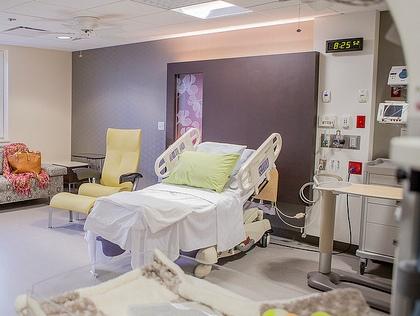
Section Branding
Header Content
National Maternal Death Project Focuses On Georgia
Primary Content

Twenty-two Georgia hospitals have joined a project to reduce maternal death rates in the United States, a nursing group announced Wednesday.
The Association of Women’s Health, Obstetric and Neonatal Nurses (AWHONN) has launched an initiative to improve the treatment of pregnancy-related complications, and is focusing on birthing hospitals in Georgia and New Jersey.
Georgia ranks 50th among states in maternal deaths. That’s a prime reason why the state was one of the two selected for the project.
Another reason is Georgia’s large number of delivery hospitals, said Lashea Wattie, the Georgia section chair for AWHONN.
The 22 hospitals selected range from such large urban/suburban facilities as Grady Memorial Hospital in downtown Atlanta, Gwinnett Medical Center in suburban Atlanta and Memorial Health University Medical Center in Savannah to such small-town/rural facilities as Stephens County Hospital in Toccoa and Colquitt Regional Medical Center in Moultrie.
The goal was to have a variety of hospitals throughout the state, AWHONN said.
The Washington-based organization points out that U.S. women experience a greater risk of maternal death than women in 46 other countries.
Maternal mortality, or “pregnancy-related death,” is defined by the CDC as the death of a woman while she is pregnant or within one year of the end of the pregnancy from any cause related to or aggravated by the pregnancy or its management.
The Georgia estimate of 35 maternal deaths per 100,000 live births in 2011 reflected a rise. The estimate was 20.5 for the period from 2001 to 2006.
That increase has kept the state “at the bottom of the pile when it comes to maternal mortality,” Dr. Seema Csukas, director of the Maternal and Child Health Section for the state Department of Public Health, told GHN in December.
The Georgia General Assembly, citing that ranking, passed legislation earlier this year that requires that Public Health establish a committee to review maternal deaths and to report on their causes.
The nation as a whole has seen its maternal mortality rate rise from 13.3 deaths per 100,000 live births in 2006 to a currently estimated mortality rate of about 21 per 100,000 live births in 2010.
AWHONN’s Postpartum Hemorrhage (PPH) Project has brought together 54 birthing hospitals in Georgia and New Jersey to improve clinical practices. Their kickoff meeting will be held in June, Wattie said, with the 18-month project starting in August.
The first initiative focuses on improving the treatment of obstetric hemorrhage — bleeding too much during childbirth — a leading cause of death during labor and delivery.
While two to three women die every day in the U.S. from pregnancy-related complications, more than half of those deaths are preventable. Incidents of obstetric hemorrhage have increased in recent years along with an overuse of induced labor, AWHONN says.
Research suggests that women who have these inductions have a greater risk of postpartum hemorrhage. And African-American women are disproportionately affected by birthing complications, with three to four times more deaths than women of all other racial and ethnic groups, according to AWHONN.
Participating hospitals will work with national experts to identify the best practices for treatment.
The project is supported by a grant from Merck for Mothers, a 10-year, $500 million initiative created by the pharmaceutical giant to improve maternal health in more than 30 countries.
Wattie, a nurse at WellStar Kennestone Hospital in Marietta, said goals include health professionals better identifying women who have the greatest risk of hemorrhage; improving the readiness and response to hemorrhage; and increasing overall awareness of the problem.
“We’re very, very excited that Georgia was selected,” she added.
See more at: http://www.georgiahealthnews.com/2014/05/georgia-focus-maternal-death-project/#sthash.VZw2W7wJ.dpuf
Tags: health, gpbwell, Georgia Health News, Andy Miller, maternal mortality, maternal deaths
